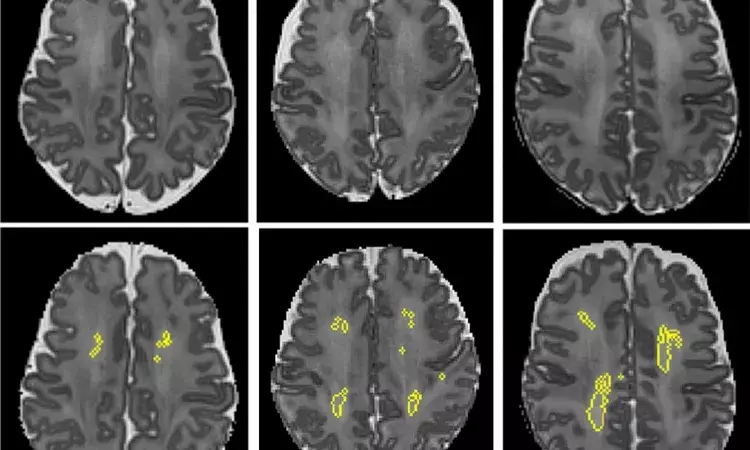- Home
- Medical news & Guidelines
- Anesthesiology
- Cardiology and CTVS
- Critical Care
- Dentistry
- Dermatology
- Diabetes and Endocrinology
- ENT
- Gastroenterology
- Medicine
- Nephrology
- Neurology
- Obstretics-Gynaecology
- Oncology
- Ophthalmology
- Orthopaedics
- Pediatrics-Neonatology
- Psychiatry
- Pulmonology
- Radiology
- Surgery
- Urology
- Laboratory Medicine
- Diet
- Nursing
- Paramedical
- Physiotherapy
- Health news
- Fact Check
- Bone Health Fact Check
- Brain Health Fact Check
- Cancer Related Fact Check
- Child Care Fact Check
- Dental and oral health fact check
- Diabetes and metabolic health fact check
- Diet and Nutrition Fact Check
- Eye and ENT Care Fact Check
- Fitness fact check
- Gut health fact check
- Heart health fact check
- Kidney health fact check
- Medical education fact check
- Men's health fact check
- Respiratory fact check
- Skin and hair care fact check
- Vaccine and Immunization fact check
- Women's health fact check
- AYUSH
- State News
- Andaman and Nicobar Islands
- Andhra Pradesh
- Arunachal Pradesh
- Assam
- Bihar
- Chandigarh
- Chattisgarh
- Dadra and Nagar Haveli
- Daman and Diu
- Delhi
- Goa
- Gujarat
- Haryana
- Himachal Pradesh
- Jammu & Kashmir
- Jharkhand
- Karnataka
- Kerala
- Ladakh
- Lakshadweep
- Madhya Pradesh
- Maharashtra
- Manipur
- Meghalaya
- Mizoram
- Nagaland
- Odisha
- Puducherry
- Punjab
- Rajasthan
- Sikkim
- Tamil Nadu
- Telangana
- Tripura
- Uttar Pradesh
- Uttrakhand
- West Bengal
- Medical Education
- Industry
Early MRI scans may predict risk of cerebral palsy in preterm infants: Study

These MRI scans show diffuse white matter abnormality (DWMA). The top three panels display raw MRI images from very preterm infants born at 27 weeks (left), 26 weeks (center) and 31 weeks (right) gestation. Higher signal intensity can be seen in the central white matter, particularly for the 31-week gestation infant. The bottom panels display the corresponding slices with objectively segmented DWMA in yellow. The 27-week infant (left) was diagnosed with mild DWMA, the 26-week infant (center) was diagnosed with moderate DWMA, and the 31-week infant had severe DWMA.
CREDIT
Cincinnati Children's and Nature Scientific Reports
USAGE RESTRICTIONS
As many as 70% of very premature infants show signs of white matter abnormalities at birth. But only some of those infants go on to develop cognitive, language, motor, or behavioral disorders as they grow.
Now, scientists say a new software tool can employ MRI scan data to predict which infants are most at risk of these brain developmental issues. The tool's latest milestone--predicting the risk of motor development disorders (e.g. cerebral palsy) --were detailed online Sept. 28, 2020, in Scientific Reports.
The study was led by Nehal Parikh, DO, MS, a neonatologist and researcher with the Perinatal Institute at Cincinnati Children's who has been working on this line of research for 12 years. He and his collaborators have published several papers exploring the value of measuring diffuse white matter abnormality (DWMA) as a biomarker for brain disorders.
A quantitative look at white matter diffusion
"While most researchers and doctors have concluded that DWMA is not pathologic, our novel studies are concluding otherwise," Parikh says. "Most studies have diagnosed DWMA qualitatively based on visual readings from radiologists (yes/no, mild/moderate/severe). These subjective diagnoses have been unreliable and therefore have not been significantly associated with neurodevelopmental disorders."
However, quantifying the volume of DWMA, does allow for risk stratification, Parikh says. The method also allows for earlier diagnosis. Currently, affected children are not diagnosed with these disorders until 2 to 5 years of age.
The first publications related to the software date back to 2013, with findings reported in Neuroimage, PLOS ONE and Pediatric Neurology that showed an association between DWMA volume and cognitive and language development at 2 years of age.
Earlier this year, they externally validated their findings and reported in the Journal of Pediatrics that DWMA volume significantly predicts cognitive and language development at 2 years of age. Additionally, in Pediatric Neurology, the team reported DWMA volume associations with the two most common neonatal diseases, bronchopulmonary dysplasia and retinopathy of prematurity.
Now, the tool shows that DWMA volume significantly and independently predicts motor development deficits, including cerebral palsy, at 3 years of age.
What's next
Parikh says the team is close to completing a large cohort study called the Cincinnati Infant Neurodevelopment Early Prediction Study (CINEPS) to further validate the findings.
"We plan to work with MRI manufacturers to incorporate our software onto their systems in order to provide objective diagnosis of DWMA at the point of care," Parikh says. "This advance will permit accurate parental counseling and early risk stratification to enable targeted early intervention therapies.
"https://www.nature.com/articles/s41598-020-72632-0
Hina Zahid Joined Medical Dialogue in 2017 with a passion to work as a Reporter. She coordinates with various national and international journals and association and covers all the stories related to Medical guidelines, Medical Journals, rare medical surgeries as well as all the updates in the medical field. Email: editorial@medicaldialogues.in. Contact no. 011-43720751
Dr Kamal Kant Kohli-MBBS, DTCD- a chest specialist with more than 30 years of practice and a flair for writing clinical articles, Dr Kamal Kant Kohli joined Medical Dialogues as a Chief Editor of Medical News. Besides writing articles, as an editor, he proofreads and verifies all the medical content published on Medical Dialogues including those coming from journals, studies,medical conferences,guidelines etc. Email: drkohli@medicaldialogues.in. Contact no. 011-43720751


